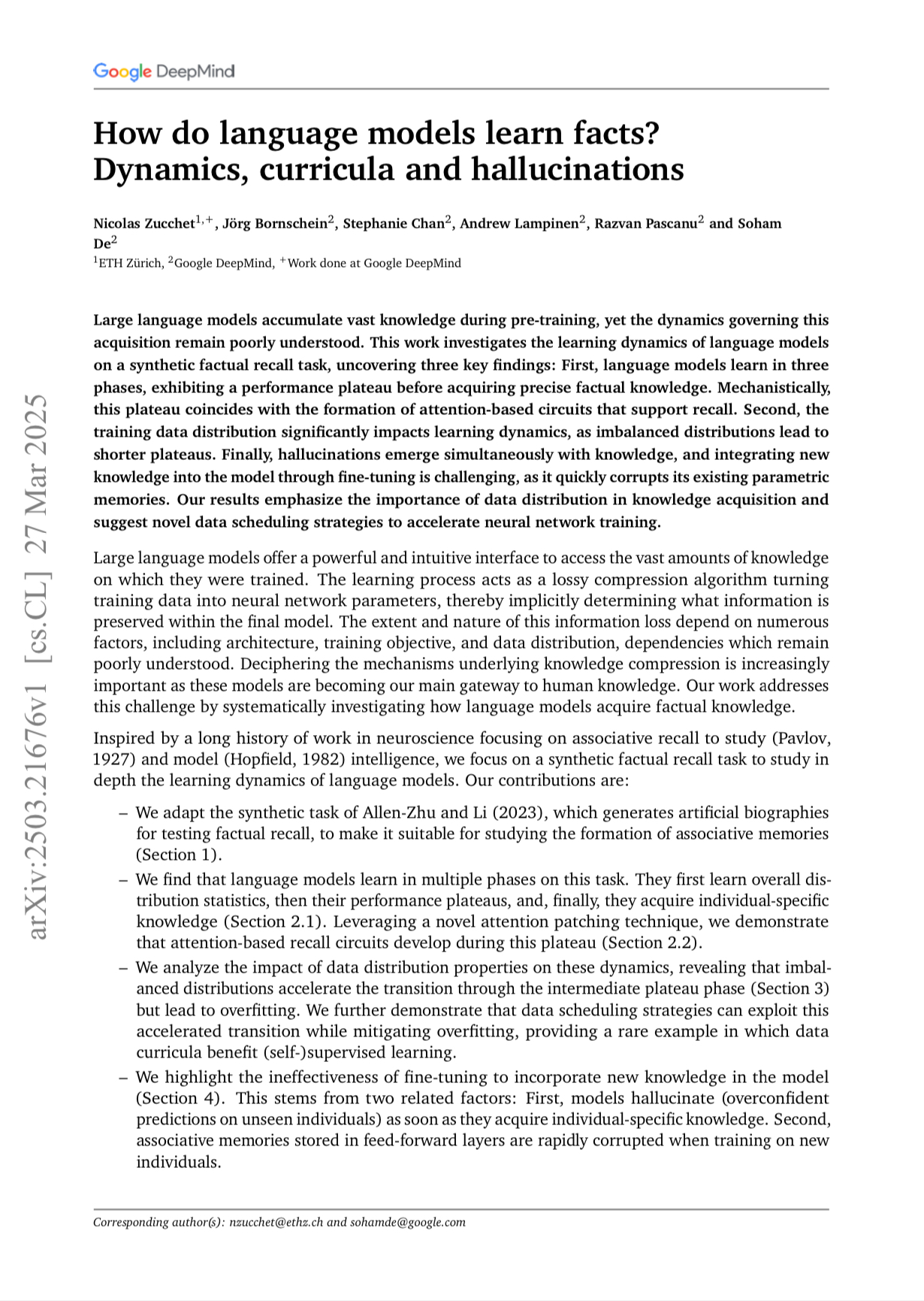Language models, like the ones powering your favorite chatbot or search engine, seem to “know” a lot. They can tell you the capital of France, summarize a novel, or even write code. But how exactly do they learn all that information?
A recent study from Google DeepMind and ETH Zürich—“How Do Language Models Learn Facts?”—dives into that question and uncovers some surprisingly human-like dynamics in how these models build up knowledge. Spoiler: it’s not a straight line from ignorance to insight.
The Three-Act Play of Learning
In a series of carefully designed experiments, researchers trained language models on specific facts and watched what happened. They discovered a distinct three-stage learning journey:
1. The Plateau Phase – At first, the model flounders. It doesn’t recall facts accurately, and progress is slow. This isn’t failure—it’s the model quietly constructing internal “circuitry” to process and store new knowledge.
2. The Click Moment – Suddenly, after enough exposure, facts start to lock into place. The model goes from confused to confident, rapidly improving in accuracy.
3. The Hallucination Zone – Here’s the twist. As the model learns, it starts generating false—but plausible-sounding—facts. These are the infamous AI “hallucinations,” and they come bundled with genuine knowledge.
Why the Way You Feed the Data Matters
Not all facts are created equal. The researchers found that when some facts appeared more often in the training data, the model learned them faster and with more reliability. This suggests a kind of curriculum effect: the order and frequency of training examples significantly shape what the model learns—and what it forgets.
Which brings us to another surprising finding…
Fine-Tuning Can Backfire
You’d think adding more information (like updates or corrections) during fine-tuning would strengthen a model’s knowledge. But in some cases, it corrupted previously learned facts—like rewriting a memory without backing it up first. This “catastrophic forgetting” is a real challenge for keeping AI models both current and accurate.
What It All Means
This study shines a light on just how delicate and dynamic the learning process is for AI. It’s not just about stuffing models with more data—it’s about how that data is structured and introduced. A better understanding of this process could lead to AI systems that learn faster, remember more accurately, and hallucinate less.
So, the next time your chatbot gets something weirdly wrong, just remember: it’s still figuring things out, one plateau and “click” at a time.
Want the deep dive?
Read the full paper here: How Do Language Models Learn Facts?

Leave a Reply